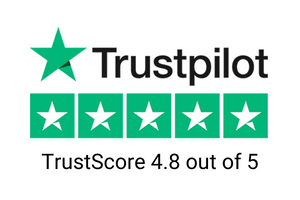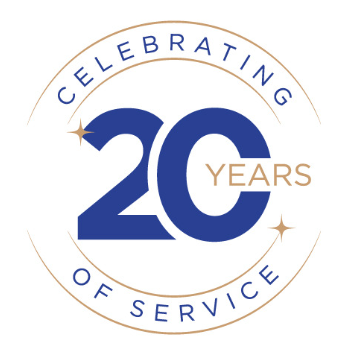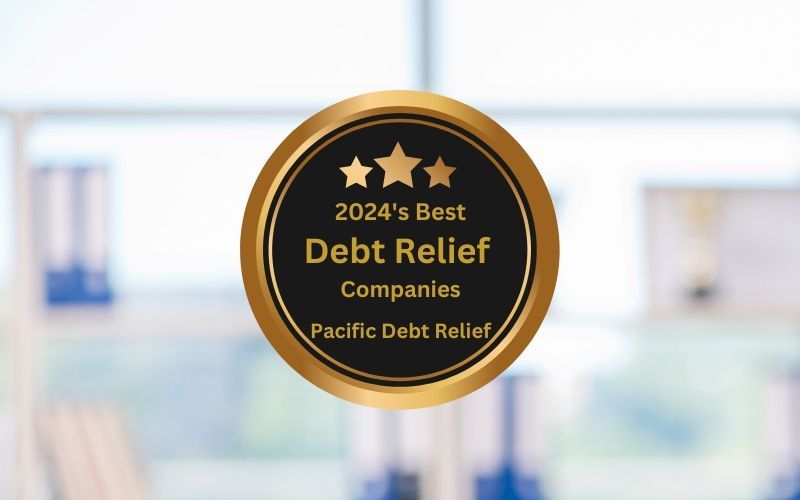Last Updated: March 26, 2024
It's time to Pay

Disclaimer: We are not qualified legal or tax professionals and are not giving advice. Always speak with a qualified professional before making any legal or financial decisions.
The holiday cheer may have faded, but for many, the debt remains a lingering reminder. With Americans accruing significant sums during the festive season, understanding how to effectively manage and eliminate holiday debt is crucial.
From taking stock of your financial obligations to strategizing your repayment and preparing for the future, it's time to take control of your post-holiday finances.
Let's explore how to minimize interest charges, improve your financial health, and ensure you're better equipped for next year's holiday spending.
Fast-track your debt solution by speaking to a debt specialist now. Free consultation guaranteed.
Paying Off Holiday Credit Card Debt
Credit Card A
- $1000
- APR 23%
- Minimum payment $100
Credit Card B
- $500
- APR 16.5%
- Minimum payment $50
Credit Card C
- $350
- APR 17%
- Minimum payment $35
Minimum Payment: if you make only minimum payments and do not use the credit card at all:
- Credit card A will take you 12 months to pay off and will be charged $120.77 in interest
- Credit card B will take 11 months to pay off and will be charged $41.58
- Credit card C will take 11 months to pay off and will be charged $30.08
- Total paid is $2,043. Total interest is: $192.43
Using this method, you will only have paid off the credit cards just before it is time for more holiday spending.
Snowball Payment: If you choose the snowball payment method, you will pay off the credit card (C) with the lowest debt first, while making minimum payments on credit cards A and B. Once C is paid off, you will put that payment amount onto the next lowest card, B and then onto card A.
Let’s say you can add $20 to your minimum payment. Once you have credit card C paid off, you now have a balance of $185.38 on credit card B. You’ll make payments of $105 ($50 and $55) on that card for two months. When cards C and B are paid off, you then turn your attention to Card A and pay $205 a month.
Credit card A will take 10 months to pay off and will be charged $99.94 in interest.- Credit card C will take 7 months to pay off and will be charged $19.39
- Credit card B will take 2 months to pay off and will be charged $38.94
- Total paid is $2026. Total interest is: $176
Avalanche Payment: If you choose the avalanche payment, you will choose the credit card with the highest interest rate, credit A, and pay it off first. You pay an extra $20 each month for a payment of $120. It will take you roughly 10 months and you are charged $99.94 in interest. You then turn your attention to credit card C, which has a remaining debt of $63.78. You pay that in full the next month. Credit card B now has a remaining balance of $39.01 and you pay that in full the next month.
Debt Consolidation: this option requires you to find a personal loan. You then pay off credit cards A, B, and C. Since the interest rate is dependent on your credit score, you may need to improve your credit score for the best rates. However, let’s say you find a personal loan for $1500 at 15% and pay off both credit cards. Your terms will be for a certain number of months, however, your best bet is to pay it off as fast as possible. You’ll pay the $185 per month that you are already paying. It will take 11 months and you’ll pay $138 in interest. For a bigger effect, pay the $205. It will drop your pay off time to 10 months and interest charges to $125!
Balance Transfer Payment: using this method involves finding a 0% APR balance transfer credit card. If you can get one of these, this is your best bet to pay off your credit cards. However, there will be fees associated with the transfer and the regular interest rate can be higher than your current cards. Most balance transfer cards give you a limited number of months to pay off the card at 0% APR. There is also a limit as to how much you can transfer, so you may only be able to roll two of the cards onto the balance transfer card. In addition, any new charges are made at the higher interest rate. Make certain you read the terms and agreements to make certain this method will not land you in deeper debt!
Check out the Pacific Debt, Inc credit card interest rate calculator to figure out your best options.
| Option | Length | Total paid | Total interest |
|---|---|---|---|
| Minimum payment | 12 months | $2,043 | $193 |
| Snowball | 10 months | $2,026 | $176 |
| Avalanche | 11 months | $2,021 | $170 |
| Debt consolidation | 11 months | $1,988 | $113 |
| Balance transfer | 10 months | $1,850 | $0 |
Debt Payoff Strategies
If nothing else, it should be obvious that paying as much as you can on your credit card using either the snowball or avalanche methods can decrease the amount of time and the interest you pay. While you are making payments, look for areas where you can cut back on day to day expenses and apply those to your balance.
If you can manage to pay an extra $100 a month on credit card A, it will only take you 6 months to pay it off and the interest charges drop to $62. That is roughly half of the minimum payment time and interest.
Planning for Next Year
As you pay off this year’s holiday purchases, start planning for next year. Studies have found that the stress to be perfect during the holidays actually ruins them for a lot of people. Instead of stressing and spending, try to find ways to make it more pleasurable and inexpensive.
Gift purchases - the old saying is that handmade or thoughtful gifts are the best. Try to find one or two gifts within your budget for each person on your list. Consider dropping most of the adults from your Christmas list. Most of us have too much stuff anyway, and a small gift or a donation to a worthy cause would mean a lot to someone.
Holiday meals - start early and shop sales to build your holiday meals. Decide on a menu and remember it doesn't have to perfect. It just needs to be enjoyable to everyone, including the cook!
Budget to Free Up More Money for Debt Payments
Creating a monthly budget is essential if you want to pay off debt faster. Knowing exactly where your money goes allows you to identify areas to cut back expenses and find opportunities for saving.
Some budgeting tips:
- Use a budget template or online budgeting app like Mint to track all monthly income and spending. Seeing everything laid out makes it easier to make adjustments.
- Categorize expenses as essentials (housing, utilities, groceries, etc.) and non-essentials (dining out, entertainment, hobbies). Cutting back on non-essentials can free up more money.
- Look for little things you can change like canceling unused subscriptions, downgrading cable/internet plans, or dining out less. Small savings add up over time.
- Try to build savings where possible for unexpected expenses rather than relying on credit cards. Check out our building emergency fund guide.
Sticking to a budget allows you to direct more money each month toward outstanding debts. Even an extra $100-200 can make a difference in how quickly you achieve freedom from debt.
Effective Debt Payoff Strategies
When you have multiple debts at various interest rates, adopting a focused repayment strategy can help pay them off faster and minimize interest costs. Two popular methods are the debt avalanche and debt snowball.
The debt avalanche method prioritizes paying off debts with the highest interest rates first. This method focuses on minimizing interest expenses so more payments go toward principal balances. Although it takes discipline, this strategy helps you pay off debts faster.
With the debt snowball method, you pay off debts with the smallest balances first regardless of interest rate. As each small debt is paid, the monthly payments “snowball” onto the next largest debt. The early wins can give motivation to keep charging forward and paying off debts.
Evaluate both the debt avalanche and debt snowball strategies to decide which will work best for your debt payoff journey based on interest rates, motivation needs, etc.
Should You Pursue Debt Consolidation?
If you have lingering high-rate credit card balances that make it difficult to progress, combining multiple debts into one can be helpful. Debt consolidation lets you roll balances into a single lower fixed-rate loan, simplifying payments into one monthly bill.
That said, consolidation does have risks. You don’t want to roll back progress if it takes longer to pay off or the interest cost ends up higher. Carefully review interest rates and repayment terms before applying for a consolidation loan. Getting on track with a debt repayment plan without consolidation may still be a better route for some.
As always, our non-profit credit counselors are available for free consultations if you need guidance on the best path forward to overcome debt.
FAQs
Conclusion
Eliminating holiday debt quickly hinges first on cutting expenses where possible through mindful budgeting. This frees up cash flow to put towards debts. Employing focused repayment strategies like the debt avalanche or debt snowball can help you systematically pay off balances faster as well.
Consolidating multiple high-rate debts may also accelerate progress if done judiciously and in terms of improving cost efficiency. Review all options - reduced payments, lower rates, modified terms before considering risky steps like 401k loans.
Most importantly, know that with concerted effort using these and other proven debt repayment tactics, you can take back control and make progress in reducing debt burdens to restore financial health. Our experienced credit counseling team is here to help you craft your debt freedom plan.
Pacific Debt, Inc
If you have overused your credit cards for years and cannot make even the minimum payment, you may need more help.
Pacific Debt, Inc. is an award-winning debt settlement company. If you’d like more information on how to get out of debt, we are happy to help. We will explain all your options and help you decide which is the best option for you. We can even refer you to trusted partners who can better meet your needs
If you have more questions, contact one of our debt specialists today. The initial consultation is free, and our debt experts will explain your options to you.
*Disclaimer: Pacific Debt Relief explicitly states that it is not a credit repair organization, and its program does not aim to improve individuals' credit scores. The information provided here is intended solely for educational purposes, aiding consumers in making informed decisions regarding credit and debt matters. The content does not constitute legal or financial advice. Pacific Debt Relief strongly advises individuals to seek the counsel of qualified professionals before undertaking any legal or financial actions.
Reduce Your Credit Card Debt By Up to Half

BBB Reviews | 4.9/5.0 Rating









 Do Not Sell My Personal Information
Do Not Sell My Personal Information